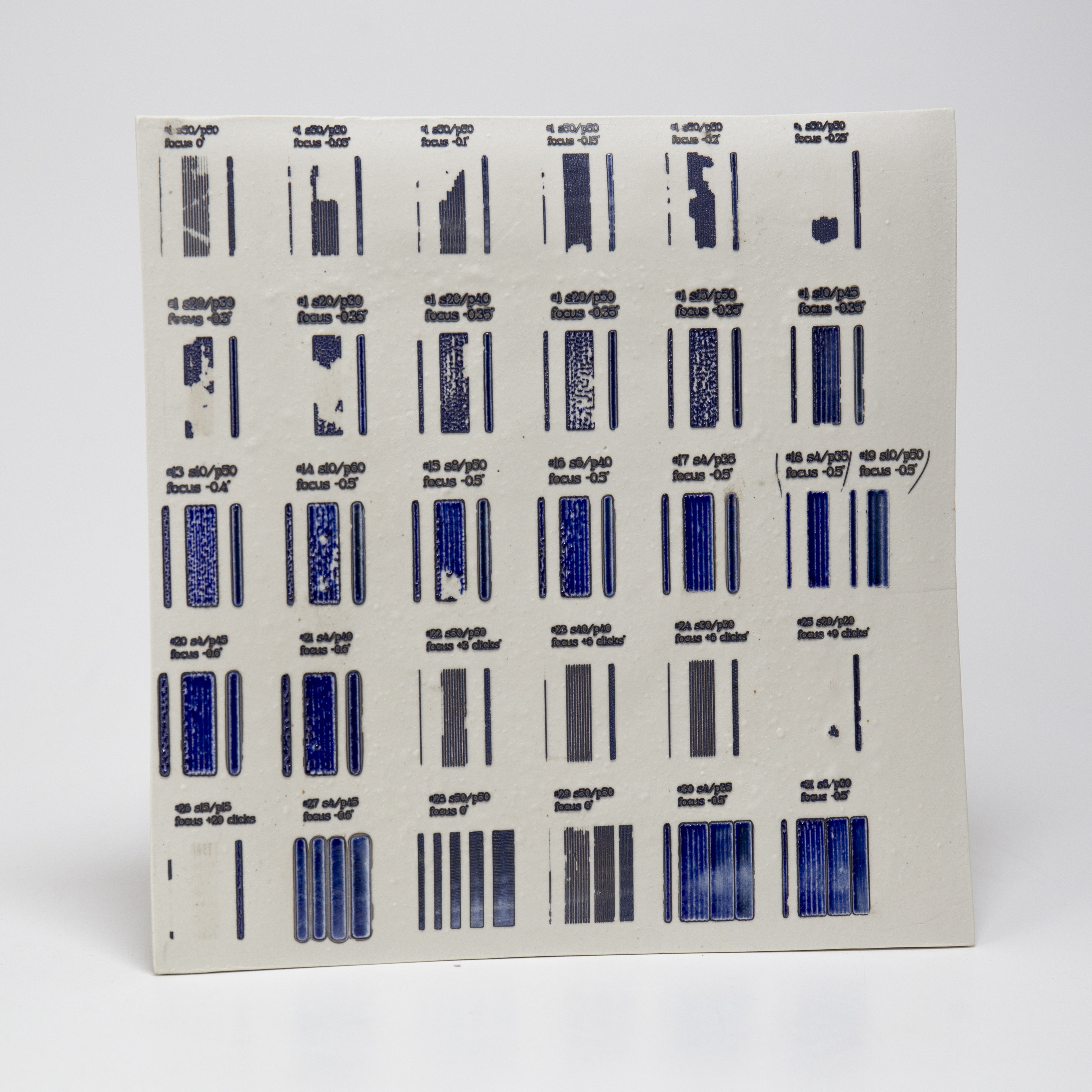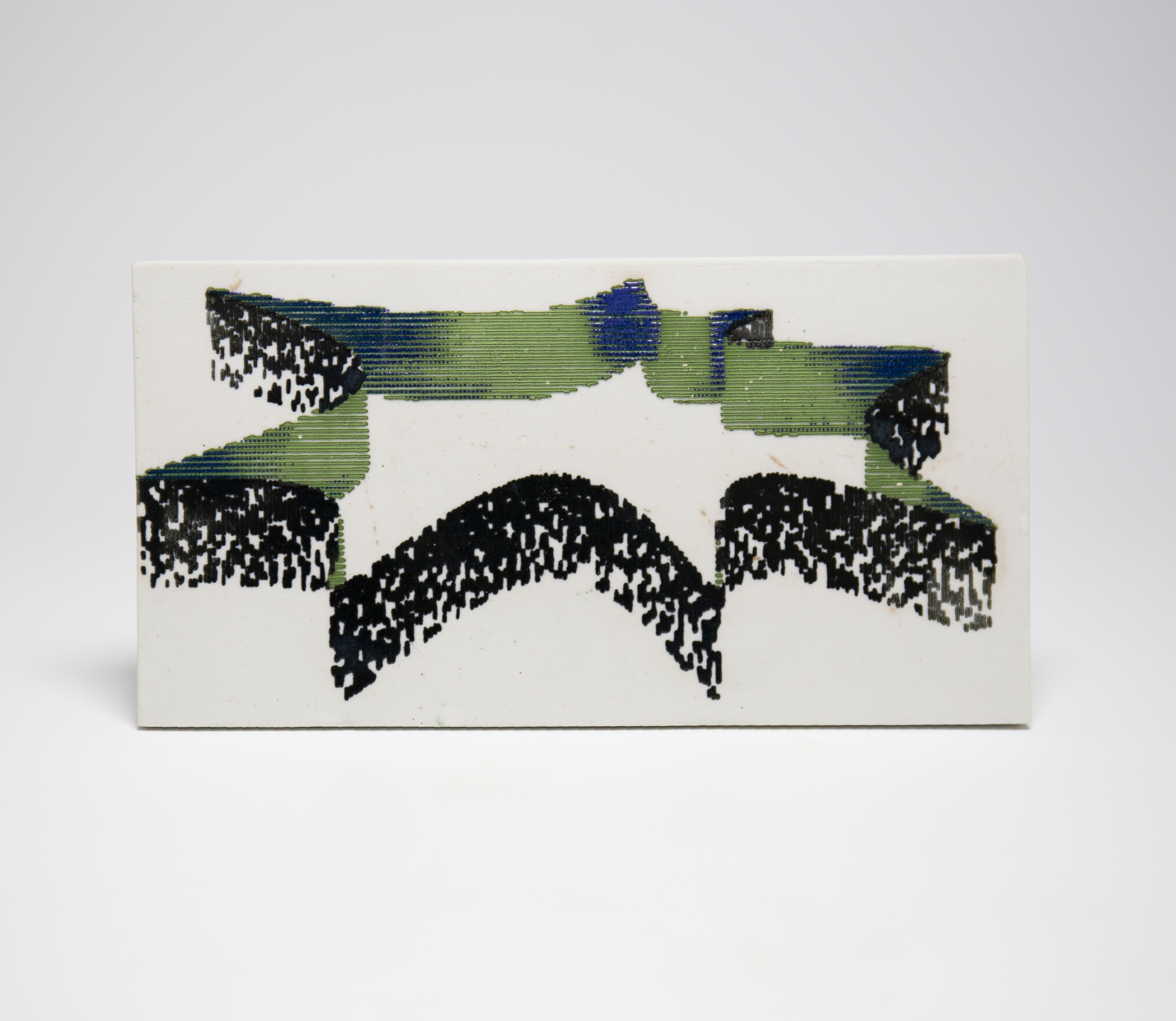Laser Glazing
Works and tests using the lasercutter to sinter and fuse glaze onto ceramic slabs
research began in collaboration with Professor Eric Souther at the New York State College of Ceramics.
Rhino knot 2020
laser glazed print on porcelain
laser glazed print on porcelain

Rhino knot 2020
Detail
Detail


Mountain vase 2020
3 color glaze print
laser glazed porcelain20x13cm.
3 color glaze print
laser glazed porcelain20x13cm.

Mountain vase 2020
detail
detail
Mountain vase (study) 2020
4 color glaze print
laser glazed porcelain
14x9 cm.
4 color glaze print
laser glazed porcelain
14x9 cm.

“out of focus” test, to examine how intentionally working with the laser unfocused could effect the sintering of glaze. This test uses a cone 04 high frit glaze with cobalt. 202125x25cm.


Ball Reflecting Room 2020
three color laser glaze print on porcelain
15x13.5 cm.
a test of color mixing, modeled and rendered in Rhino and then converted to halftones in Photoshop and vectorized in Illustrator.
three color laser glaze print on porcelain
15x13.5 cm.
a test of color mixing, modeled and rendered in Rhino and then converted to halftones in Photoshop and vectorized in Illustrator.
lasering test of oxide washes over an industurially produced glazed tile. From left to right: cobalt oxide, Best Black Mason stain, chrome oxide, black copper oxide, red iron oxide. strong copper reduction is definitely worth future investigation.
2019 20x10cm.
2019 20x10cm.


Kaboom 2020
Three color laser glazed porcelain
21x11 cm.
Three color laser glazed porcelain
21x11 cm.

Kaboom 2020
detail
detail
another out of focus test, to measure how intentionally working with the laser unfocused could effect the sintering of glaze. This test uses a cone 10 “St. John Black” glaze with a high content of red clay.
2021 27x27cm.
2021 27x27cm.

Zigzag lines instead of straight ones, and the addition of frit in the glaze, seem to help promote nice even melt in the glaze. Thin layers of glaze can be fired one on top of the other to create good adhesion with the ceramics. More notes will follow..

Tangled1 2021
Four glaze laser print on porcelain
18x24cm
Four glaze laser print on porcelain
18x24cm

Tangled1 2021
detail
detail
Twisted1 2021
5 color glaze laser print on porcelain
33x15 cm.
5 color glaze laser print on porcelain
33x15 cm.


lasering test of Mason-stains over an industurially produced glazed tile. From left to right: evergreen, dark red, daisy purple, walnut brown, best black, orange, Praseodymium yellow, zr vn blue. 2019 20x20cm.
Kaboom (tall) 2020.
Three tone glaze laser print on porcelain.
18x15cm.
Three tone glaze laser print on porcelain.
18x15cm.

Kaboom (tall) 2020.
detail
detail


Kaboom (study) 2020.
Three color glaze laser print on porcelain
16x14 cm.
Three color glaze laser print on porcelain
16x14 cm.